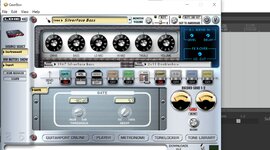cfg
Member
I recently acquired a BAE 1073 DMP, and I have a used Manley Dual Mono Mic Preamp on the way. In my reading, I've seen several people say this or that preamp's DI is great for bass. When people use bass with a given preamp's DI's, are they then running the signal through other plugins like say IK multimedia's Amplitube, or are they literally using the signal just as furnished by the preamp?
Last edited:

